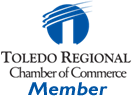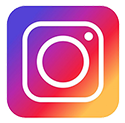Acceptable File Formats
To enable jobs to fit into our automatic workflow, Newfax Corporation currently accepts files in three formats: EPS, TIFF or PDF. There are specific guidelines for each file type:
TIFF - (Photoshop or other photo editing software)
Should be 300 dpi. Create the file at the correct size for trim (plus 1/16” on all sides if bleeds). Do not include crop marks or printers marks. Must be in CMYK and flattened (no layers). Do NOT use LZW compression.
EPS - (Illustrator, InDesign, Corel)
Set all fonts to outlines (curves). Be certain that any placed images are converted from RGB or spot color to CMYK. Create an area 1/16” larger (on each side) than final trim size for all jobs that have bleeds. If a job only bleeds off one edge, you should still include the bleed area on ALL four sides. Do not include crop marks or printers marks. (Get more details on how to properly construct your EPS file here.)
PDF - Many software programs will export files as PDF. We recommend this option however please make sure that your conversion settings are correct. Otherwise we suggest you export or save your file as an EPS, then distill that EPS through Acrobat Distiller, using the PressReady settings. This will ensure that your fonts are all embedded, and any graphic files are resampled correctly. Be sure your source file is created properly, with the document size being the finished trim size PLUS 1/8” all around (1/16” on each side) for bleeds. Any graphics used in your file must follow the guidelines above for either EPS or TIFF.
Fonts
We do not accept files which require fonts to be available on our servers. All fonts used must either be turned to outlines, flattened or embedded following the guidelines above.
Image Resolution
The optimum resolution for all files is 300 dpi. Even if your job contains black and white images, they should be saved as greyscale at 300 dpi. All images should be included at 100% scale (of the print size) and must be submitted in uncompressed TIFF format without layers (flattened). They must all be converted to CMYK colors. Remember, a higher quality image resolution does not always result in better print quality. Excessive image resolutions (beyond 300 dpi) will only dramatically increase your file size and in most cases will not improve the print quality. Furthermore, it may require extra time to upload larger files.
Digital Camera Images
Start with a good image. A good print starts with a high-quality image. One that merely looks good onscreen is not enough. Here’s what to look for in an image file: Before using images from a digital camera, make sure the camera is set at a high resolution to result in 300 DPI at the intended photo print size. Most cameras have various settings for resolutions. The highest resolution for your camera depends on how many Megapixels it has. You cannot increase the resolution of a photo after it is taken, except by reducing its dimensions.
Best Format
Even if your image is high resolution, you’ll still need to save it in the correct file format: TIFF. Always save your pictures in the TIFF format, Do not use LZW, JPG or any other type of compression offered by your software. RGB colors are used by most digital cameras and must be converted to CMYK colors. The color printing process only uses CMYK, and RGB colors converted automatically in our RIP may have unexpected results. Newfax Corporation will not be responsible for undesirable colors stemming from residual RGB images.
Internet Images
Images found on the Internet are typically at a resolution of 72 DPI in addition to being RGB. This resolution is much too low for quality printing and will produce very poor results. You are also taking a risk by using images without permission that may be copyrighted.
CMYK vs. RGB
Color space is one of the most often misunderstood terms. Simply put, the offset printing process prints color in the CMYK range. (Spot color is another entire issue, which is not applicable here). Computer monitors display their colors in the RGB range. When RGB is converted to CMYK, which is the standard by which all offset process color printing is currently done, some RGB colors will be out of gamut: lost in the conversion process. Newfax Corporation’s digital workflow will automatically convert any RGB images to CMYK, but the results may not be what is expected. We recommend you convert all images to CMYK (at the standard SWOP setting) prior to sending. This also includes any placed bitmap images. That way you will have a better idea of how they will actually print.
Rich Black
In 4 color process printing large areas of black can appear thin or washed out due to only one layer of ink being put down. To compensate for this ‘rich black’ should be
used for large black solids. Newfax Corporation specifies a formula of 40% cyan, 30% magenta, 20% yellow and 100% black to produce a neutral rich black..
Black Text:
Type is another matter. To assure clean appearing black text, type less than 36 points high should be sent as black only (100% k) with no other color mixed in. Even for typefaces over 36 points rich black should only be used where the face
is bold or blocky. Type to print in colors other than black does not have any special requirements.
Bleeds and Crop Marks
The document size for a product without bleeds should match the finished size of the product. Example: a 4”x6” postcard with no bleeds would have a document size of 4”x6”.
For products with bleeds, you should allow 1/16” (4.5 pt) beyond the trim on each side. Example: an 8-1/2” x 11” sheet with bleeds would have a document size of 8- 5/8” x 11-1/8”. Live matter should be positioned 1/4” in from trim. We do not require any cropmarks, printer marks or color bars on your document but we would prefer to have them.






